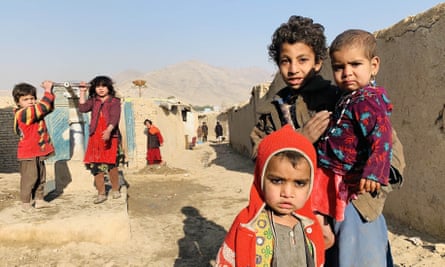Intense storms and flooding triggered three times more displacements than violent conflicts did last year, as the number of people internally displaced worldwide hit the highest level on record.
There were at least 55 million internally displaced people (IDPs) by the end of last year, according to figures published by the Norwegian Refugee Council’s Internal Displacement Monitoring Centre (IDMC).
There were more than twice as many people displaced within their own country as forced out of their country as refugees, the IDMC said. The number is the highest on record, but in line with its steady rise over the past decade.
During a year that was the warmest on record, 5 million more people were displaced than in 2019.
To demonstrate the scale of the situation, the Norwegian centre’s recording system covers not only where the overall number of displaced people stood up to the end of 2020 – but also the number of moves, or “displacements”, that happened within 2020 alone. If a woman is forced from her home because of flooding, for example, and then wildfires wreck her displaced-persons camp, this counts as two displacements, though one person has been displaced.
Looking first at the overall total of 55 million internally displaced people, the report found that about 48 million people had been uprooted from their homes as a result of conflict and violence up to the end of last year, while 7 million had been displaced by disasters. The IDMC said the latter was likely to be a significant underestimate due to incomplete data.
About 20 million IDPs were children aged under 15 and 2.6 million were over 65. Most live in low- and middle-income countries.
The IDMC report said: “Every year, millions of people are forced to flee their homes because of conflict and violence. Disasters and the effects of climate change regularly trigger new and secondary displacement, undermining people’s security and wellbeing.
“The scale of displacement worldwide is increasing, and most of it is happening within countries’ borders.”

Countries with the highest disaster-driven internal displacements were Afghanistan, with 1.1 million people; India, with 929,000; and Pakistan with 806,000.
The countries with the highest number of people displaced by conflict and violence were Syria (6.6 million), the Democratic Republic of the Congo (5.3 million), and Colombia (4.9 million).
Turning to the the other measurement, the number of movements people made during 2020 alone – if they were displaced at least once – the report said the highest annual figure in 10 years had been recorded at more than 40 million new displacements.
Of these, it said, 30 million were a result of floods, storms and wildfires.
East Asia and the Pacific region was the location of 30.3% of new displacements in 2020. Sub-Saharan Africa was the second worst-affected region, accounting for 27.4%.
The IDMC’s report shows that the nearly 10 million new displacements driven by conflict last year were mainly triggered “by persisting levels of violence in the Democratic Republic of the Congo, Syria and Ethiopia”.

Alexandra Bilak, IDMC’s director, said: “It is particularly concerning that these high figures were recorded against the backdrop of the Covid-19 pandemic, when movement restrictions obstructed data collection and fewer people sought out emergency shelters for fear of infection.
“Today’s displacement crises arise from many interconnected factors, including climate and environmental change, protracted conflicts and political instability. In a world made more fragile by the Covid-19 pandemic, sustained political will and investment in locally owned solutions will be more important than ever.”
The Norwegian Refugee Council’s secretary general, Jan Egeland, added: “It’s shocking that someone was forced to flee their home inside their own country every single second last year. We are failing to protect the world’s most vulnerable people from conflict and disasters.”
